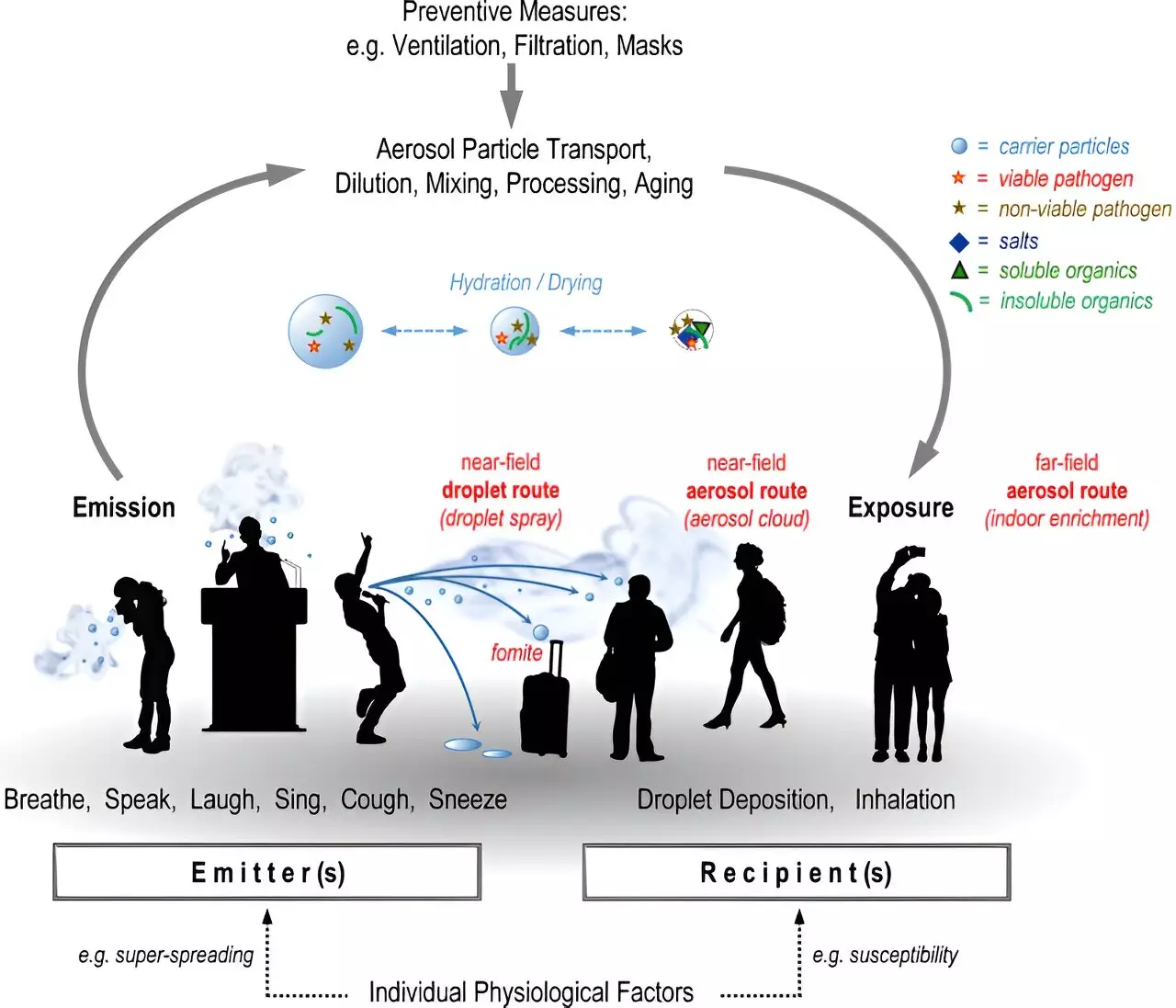In the wake of the global pandemic, scientists from various disciplines have united in their efforts to combat infectious diseases. One such team, comprised of atmospheric scientists, chemists, and infectious disease specialists, has embarked on an important mission at the Max Planck Institute for Chemistry. Their objective is to gather and analyze publicly available information on droplet properties, including their distribution by size, composition, and emission characteristics. By collating this data, they aim to develop effective mitigation strategies against non-contact infectious agents. This article delves into their research and highlights the crucial role it plays in combating diseases like COVID-19.
At the onset of the pandemic, researchers Christopher Pöhlker and his wife Mira, both experts in atmospheric and cloud sciences, recognized the need to understand the nature of droplet size and its correlation with airborne disease transmission. To their surprise, they discovered a dearth of research covering respiratory droplet size in relation to infectious diseases. Motivated by this knowledge gap, Christopher and Mira decided to undertake their own research project with the aim of collating and organizing existing information that could prove valuable to the medical community.
Realizing the interdisciplinary nature of the task at hand, Christopher and Mira formed a team with specialists from diverse fields, including researchers from the Max Planck Institute for Dynamical Systems, the University of Denver, Georg August University, and St. Petersburg State University. By leveraging their individual expertise, the team set out to parameterize droplets involved in respiratory infections, particularly COVID-19.
To initiate their research, the team conducted an extensive search for available information on infectious droplet size. Armed with this knowledge, they embarked on a mission to create a comprehensive parameterization scheme, effectively collating the data they had collected. This involved developing a classification system based on different modes of droplet size distribution throughout the body. The team identified five distinct types, categorized by size (ranging from less than 0.2 µm to 130 µm) and the anatomical location where they are formed (lungs, mouth, tongue/lips, and larynx-trachea). Importantly, the researchers acknowledged that additional data correlating droplet size with infection potential is still lacking, leaving room for further investigation.
While the team’s collating process has yielded significant insights, they emphasize the need for human studies to fully complete their analysis. These studies allow researchers to gain a deeper understanding of the relationship between droplet properties and infection transmission. By conducting such studies, the team aims to provide medical researchers with a valuable resource to develop effective anti-transmission measures against infectious diseases.
The collaborative effort undertaken by atmospheric scientists, chemists, and infectious disease specialists at the Max Planck Institute for Chemistry sheds light on the importance of understanding droplet properties in combatting infectious diseases. By collating and analyzing data on droplet distribution, composition, and emission, the team aims to provide medical researchers with vital information to develop effective mitigation strategies against non-contact infectious agents. With the ever-evolving threat of diseases like COVID-19, interdisciplinary research efforts of this nature are crucial in safeguarding public health. Through continued collaboration and the pursuit of knowledge, scientists strive to overcome the challenges posed by infectious diseases and ensure the well-being of communities worldwide.


Leave a Reply